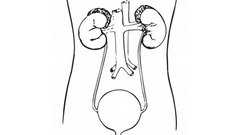
EP. 2A: The Role of Nuclear Imaging (PET) and PSMA in Prostate Cancer Therapy
In this second video of the series, Phillip J. Koo, MD, of the Banner MD Anderson Cancer Center explains the role of nuclear imaging (PET) and PSMA in the diagnosis and treatment of prostate cancer.
Episodes in this series

Nuclear medicine, nuclear medicine radiology, in my eyes, is becoming that fourth pillar of any [genitourinary] (GU) oncology program that is focusing on prostate cancer. So in that team-based approach to cancer, nuclear medicine is serving a critical role with regard to being able to diagnose disease better, and now offering treatment options.
When we’re thinking about what radiotracer should be used with imaging, whether it’s PET/CT or PET/MRI—[with] PET/MRI [being] much more limited in terms of access—you really want to answer 2 questions: … [W]hat disease state are you in? And what is the question you’re trying to answer?
So, for me, when it comes to these next-generation PET imaging agents in prostate cancer, there are really 2 main areas where we’re seeing the greatest impact. [The] first—[and] primary—area is in patients with biochemical recurrence.... And then the other disease state, or other bucket that we like to think about is patients at initial diagnosis. So these are patients [who present] before prostatectomy or radiation therapy, where you’re looking to detect metastatic disease.
And what we’re seeing is this transition, or this growth, of an area called phenotypic precision medicine. Phenotypic precision medicine is really the combination of genotypes with environmental factors that might lead to a specific phenotypic expression of a certain genotype. It is very interesting, because PSMA PET is noninvasive. It’s not invasive, and it’s also whole-body imaging, so you can get a global picture of how a disease is presenting itself in a specific patient with a single imaging test. And I think this is important, because, genotypes, there’s no question about the importance and power of genotypes. And the genetic information that we get from biopsies, we’ve seen that be the driver of how we select therapies in patients. But the phenotypic expression can also be very powerful. And with PSMA PET, it’s this approach of being able to confirm that the patient is expressing a certain target, and it’s also able to see how the patient’s whole body is expressing that target. And then from there, you could actually choose a therapy that might target that specific target.
So we could use the imaging to help predict and pick the right patients that will benefit from that therapy; you really have the best of both worlds. And this is why there’s a great deal of excitement around this new area called theranostics. And theranostics is really the idea of being able to see and treat simultaneously.
We’re just really scratching the surface of the phenotypic expression of disease, and there will be more to come when it comes to phenotypic precision medicine.

















































